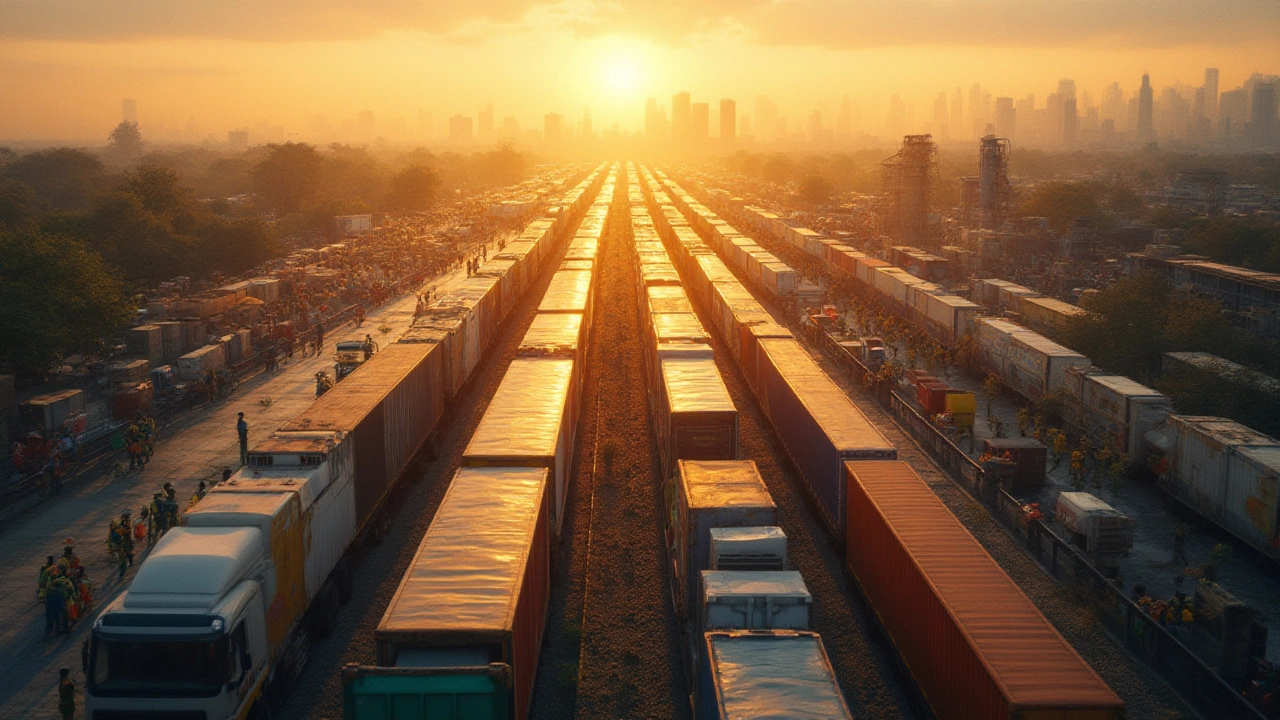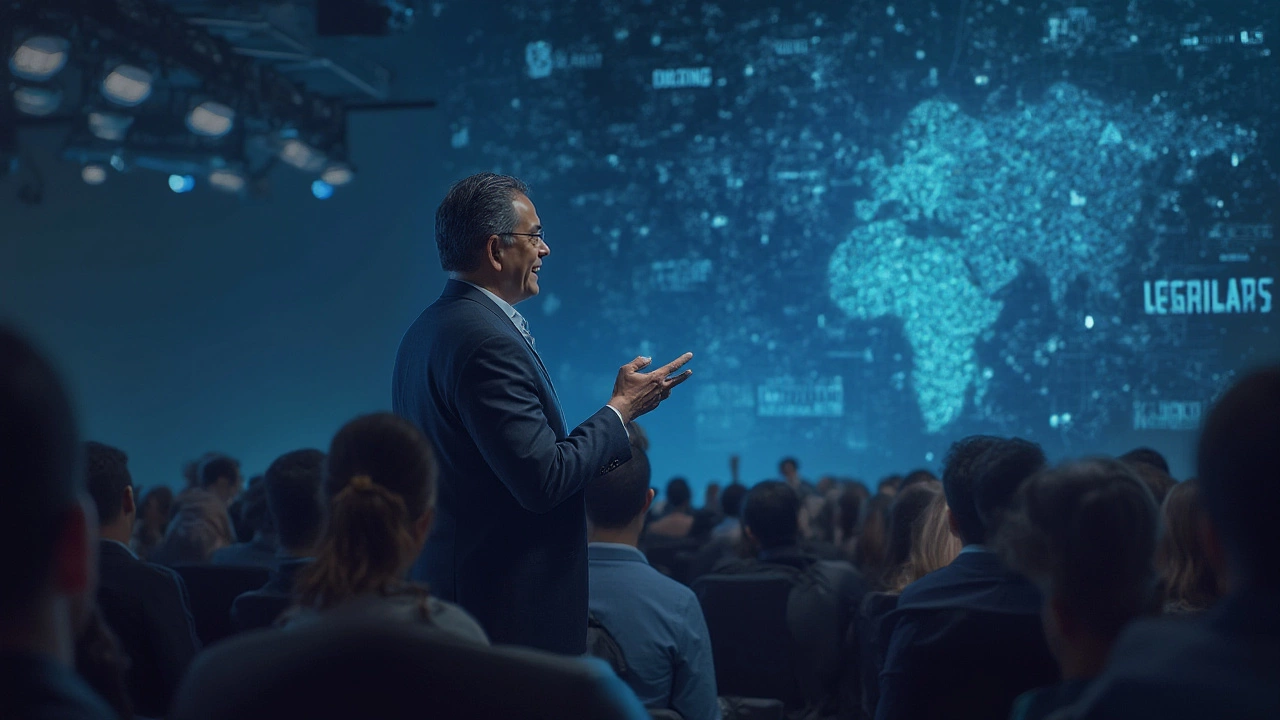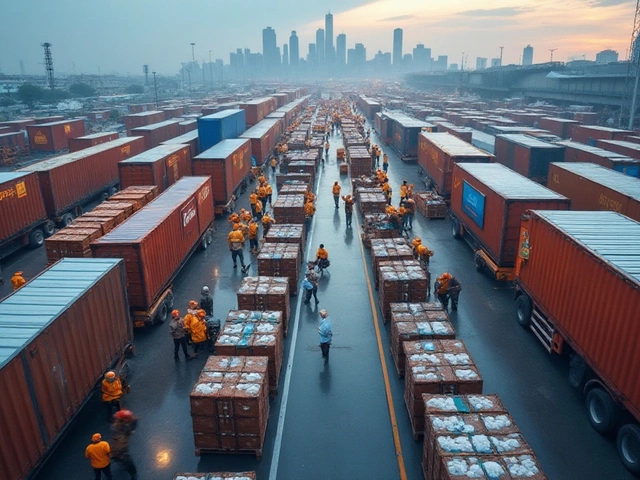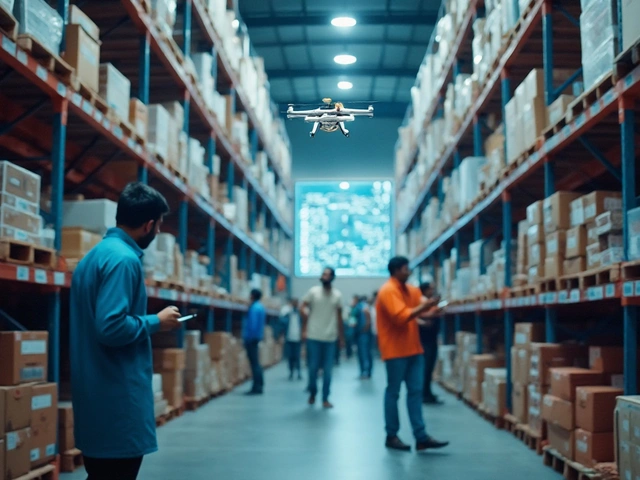Want to know who hauls in more money than anyone else in the business of moving stuff around the planet? It’s not Amazon, it’s not FedEx, and it’s not some mystery startup. The king of logistics—still as of July 2025—is DHL, officially known as Deutsche Post DHL Group. This global behemoth didn't just stumble into the role. The scale, reach, and profit they pull in each year would make most Fortune 500 CEOs weak in the knees. Here’s why they earn that top spot, and why even huge brands like Apple and Samsung trust them with their global logistics game.
What Makes DHL the Richest Logistics Company in the World?
First, let’s talk about numbers. By early 2025, DHL Group’s annual revenue punched past $100 billion, according to their latest financial report. Their net income? That sits comfortably above the $6 billion mark, even after spending billions on tech upgrades, automation, and eco-friendly delivery fleets. No other pure-play logistics company has cracked those numbers or handled as many packages across borders. DHL’s network covers 220 countries and territories—there are only 195 countries on earth, so these guys deliver almost everywhere humans live.
Now, why does the money keep flowing in? Three big reasons: diversity, scale, and trust. DHL doesn’t just run express deliveries (though you’ve probably seen those iconic yellow vans everywhere). They do freight forwarding, supply chain management, warehousing, e-commerce solutions, and specialized logistics for industries like healthcare and aviation. If you’re buying sneakers in Tokyo, medicines in Cape Town, or electric car parts in Berlin, there’s a good chance DHL played a role in getting those goods there.
Technology investments are a massive part of DHL’s edge. Since before 2020, they’ve poured billions into AI-powered routing, wearable tech for staff, automated sorting centers, and even delivery drones. Their supply chain dashboard can track millions of shipments in real time, flagging issues before anyone misses a delivery. DHL’s 2023 sustainability report claimed a 32% cut in carbon emissions compared to 2018, which attracts clients who care about eco-friendly shipping.
And here’s a wild fact: DHL employs over 600,000 people worldwide—basically, the population of Luxembourg, all delivering, sorting, driving, and managing parcels. Their biggest rivals, like FedEx and UPS, look huge on paper, but both still trail DHL in international coverage and total revenue from logistics operations. Amazon comes close, but most of its logistics are used to serve itself rather than as a widespread third-party logistics provider.
Let’s hit you with a quick glance at the numbers:
| Company | Annual Revenue (2025) | Employees | Countries Served |
|---|---|---|---|
| DHL Group | $102 billion | 600,000+ | 220+ |
| UPS | $96 billion | 500,000 | 200+ |
| FedEx | $91 billion | 530,000 | 220 |
| Kuehne + Nagel | $49 billion | 80,000 | 100+ |
It’s not even close—DHL outpaces the pack. The reasons go beyond raw hustle. They’re partnered with global brands for everything from next-day deliveries to complex pharmaceutical shipments. DHL’s local knowledge in places like Africa, South America, and Asia gives them an edge where up-and-coming markets are growing fastest.
So if you’ve wondered what separates a good logistics outfit from the richest one, it’s relentless reinvestment, gutsy international moves, and trusting clients who don’t want to gamble with their supply chain. DHL’s got all three.

How DHL Shaped the Modern Global Supply Chain
The size of DHL’s empire is hard to grasp, but it goes way beyond moving boxes. Take the COVID-19 pandemic—DHL was right at the center when vaccines needed to be shipped globally at freezing temps. In 2021 alone, they handled more than 2 billion doses, shipping sensitive cargo to over 175 countries, often in less than 72 hours. They built “cool rooms” and custom containers just for vaccines, proving they can adapt faster than other giants weighed down by old-school thinking.
DHL's reach powered the global growth of e-commerce over the past decade. When online shopping exploded, many logistics firms scrambled, but DHL was ready. They invested early in urban micro-fulfillment centers—basically tiny warehouses in city centers—so delivery times dropped from days to just a few hours in some places. DHL was also behind the scenes when Samsung launched its supply chain risk assessment model in 2023. DHL’s tech backbone let Samsung reroute shipments instantly during disasters like the 2024 Indonesia earthquakes.
But it’s not just tech. DHL’s commitment to sustainability does more than just look good in annual reports. Clients like H&M and IKEA use DHL not just for speed, but to hit their own environmental goals. DHL’s GoGreen Plus service lets businesses choose carbon-neutral shipping or use biofuel-powered planes—good for the planet and a solid marketing pitch.
Reliable data makes all the difference. DHL’s Resilience360 platform gives companies a live global map of what’s happening—think blocked ports, floods, strikes—so they can rapidly reroute shipments. It’s AI-backed and considered the gold standard for risk-aware logistics. In 2024, Ford credited Resilience360 for saving their European factories from a parts shortage that could have led to weeks of downtime.
Speed is also a weapon. DHL invests in “last-mile” tech—think electric cargo bikes for dense cities, self-driving delivery vans, and robots for sorting packages. In 2023, DHL’s Berlin hub tested an AI system that slashed missed delivery rates by over 40%. Employees trained to spot last-minute address changes or reroute on the fly. Mistakes dropped, and happy customers stuck around.
When you read about innovations in logistics, there’s a good chance DHL’s already tried (or launched) the next big thing. And that’s not accidental. Their R&D budget tops $2 billion a year, more than most universities spend on research across all departments. The attitude inside DHL is “try it, measure it, scale it.” If something works, it rolls out to all regions, fast.
For smaller companies trying to break into new countries, DHL becomes a one-stop shop. They handle customs paperwork, import/export rules, secure warehousing, and even local customer service. In 2022, a Berlin-based startup called Stilr used DHL to ship custom sneakers to over 100 countries in its first year—no need to figure out different customs documents or hire local carriers. DHL has standardized processes so well that small businesses can scale globally almost overnight.
Their global network also lets DHL weather regional slowdowns. If Europe dips, they jump on Asian or North American demand. This keeps cash flowing even in rough markets. Few rivals can boast truly worldwide resilience like that.

How to Spot the Next Big Logistics Giants
Here’s something to chew on: while DHL holds the throne right now, logistics is changing fast thanks to tech, new business models, and the rise of digital-first companies. If you want to spot the next big player—or maybe even build one—look for these factors.
- Data Power: The richest logistics companies aren’t just about trucks and planes. They own data—who’s shipping, where, how fast, and what customers want next. Watch for companies building smart platforms, not just more warehouses.
- Green Focus: Eco-friendly delivery isn’t a trend—it’s now a required box to check. Any company betting big on electric fleets, carbon-neutral shipping, or circular supply chains will attract global clients and investors.
- Full-Service Offerings: As DHL does so well, companies that handle the entire process—customs, warehousing, last-mile, and returns—will keep winning contracts. Firms betting on only one piece of the chain usually get outpaced fast.
- Elastic Networks: When disaster happens, or markets shift fast, the logistics giant able to reroute shipments, onboard new clients, or scale up capacity on short notice will ride out the chaos. Look for flexible digital networks, not just physical assets.
Digital forwarders like Flexport and Alibaba’s Cainiao have already shaken up parts of the market, but they’re not yet in DHL’s league on global scale or revenue. Still, anyone ignoring nimble, tech-savvy disruptors is asking for trouble. DHL stays rich and top-ranked because they never assume the gold medal stays around their neck forever—they keep moving, experimenting, and thinking globally.
If you’re running a business or just love watching big companies battle it out, keep an eye on logistics. Companies like DHL aren’t just delivering stuff—they’re quietly building the pipelines that make modern life possible. When a new richest logistics company finally takes the crown, you’ll recognize them by their mix of data, tech, sustainability, and a global reach that DHL’s playbook has made the industry standard.





